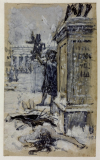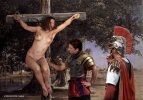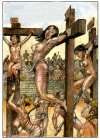Eulalia, why did you decide to identify with the martyr from Extremadura?
I suppose it was that I first happened to learn of Eulalia of Mérida, when I was about the same age as she was, and found her story very exciting - though it was a fairly brief and bowdlerised version, in a 'Little Book of Saints' that I found in my bedroom when staying with a 'churchy' great-aunt. I picked up more and more information as time went on - as a student, I got to know of Prudentius' 'epic' poem about her, which - for all its weighty style and moral message brings out the girl's spunky, impudent character and made me identify with her more and more.
It was only later that I became aware of her Barcelona 'twin', and the more elaborate tortures she experienced, and the range of artistic portrayals of her sufferings in medieval illuminations, baroque sculptures, woodcuts in early printed books, up to the present day. I love the X-cross (as a Scot, of course, it's the right one for me!), especially your gorgeous imagining of it - in Prudentius, Eul of Mérida is bound between two pillars and braziers placed around her naked body to roast her, but she shakes her long hair so it catches fire, hastening her end, when her burning body is thrown out on the icy cold pavement of the Forum, as in Waterhouse's painting (though the T-cross, and her discreet clothing, aren't part of the legend, her naked body is concealed overnight by snow)
So I came to know, and eagerly identify with, Eulalia firstly through written, literary accounts, and imagined being tortured like Eul of Mérida was (scourged, racked and torn with hooks, then roasted), only later discovered Eul of Barcelona and the many more visual versions of her story.





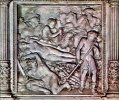

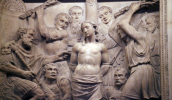


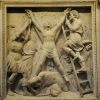




 )
)







